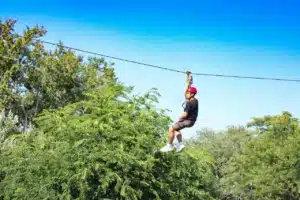Red fox fact file
The
Red fox fact file
Red Fox
Common name – red fox (normally just ‘fox’)
Scientific name – Vulpes vulpes.
Size – the body length of an adult fox can range from 60 – 90cm, with an additional tail length of up to 50cm. Standing height to the shoulder can range from 20 – 40cm. An adult male fox (dog) typically weighs around 7 – 10kg, the female (vixen) weighing slightly less.
Identification tips – easily identified by its doglike appearance and almost uniform reddy-brown coat and long, bushy tail. The under-neck and chin are often white, and the ears have black tips.
Preferred habitat – red foxes are very adaptable and can live in a wide variety of places. They are becoming increasingly more common in urban areas, especially adjacent to open countryside. In forested or open land they will make their home in any suitably sheltered hollow or hole.
Diet – with red foxes, almost anything goes. Small animals, invertebrates, insects, birds and bird eggs are favourite. Farmyard poultry such as chickens and ducks are often taken. Forest fruits, nuts and berries also make up the diet, as does leftover scraps from human rubbish bins.
Breeding – March is the main month for giving birth, around 50 days after mating. The vixen has a litter of between four and seven cubs, annually. The birth takes place underground in a ‘den’ (also called an earth). The fox will dig her own if necessary but will try to seek out an existing hole, such as a disused badger sett, first.
Other points – very widespread throughout all areas of the New Forest National Park, including urbanised areas. Most active at night, foxes are scavengers and will readily enter people’s gardens to scrounge for food, particularly around rubbish bins.
They will also attack and eat smaller free-roaming birds and animals in gardens, given the chance, such as chickens, ducks, and rabbits.
Solitary animals for much of the time. Foxes are generally seen as a pest and have long been the centre of various hunting activities.
Related Pages:

How To Make Traveling Less Stressful
How to Make Travelling Less Stressful Travel should refresh and inspire you—not leave you feeling frazzled and drained. Unfortunately, missed connections, overloaded itineraries, and overstuffed suitcases can turn even the most exciting holiday into a

Prep Your Car for Long Nature Drives
The engine hums quietly as dawn light filters through towering pines, and you’re miles from the nearest gas station with nothing but winding mountain roads ahead. Your car isn’t just transportation on these journeys—it’s your

Rugged Looks Built for Park Terrain
Whether you’re driving winding forest roads or parked at a trailhead surrounded by mossy oaks and chirping robins, your truck says a lot about your adventure style. For many outdoor enthusiasts, function comes first—but that

Planning Safe Camps
Setting up camp in remote locations is the kind of adventure many dream about—off the grid, fresh air, starry skies. But anyone who’s tried it knows there’s a fine line between a fun escape and

How to Find the Most Beautiful Secret Hotels
If you’re craving a luxurious, quiet retreat away from the hustle and bustle, a secret hotel might be the getaway you need. You can check into a hidden spot in an atmospheric city, a gorgeous

The Most Thrilling Shore Excursions
Do you want to know about the most thrilling shore excursions? If you’re after an action-packed escape on the British coast, New Forest National Park really does deliver some of the wildest shore excursions for

